Best Festivals of Ladakh to Explore in 2025
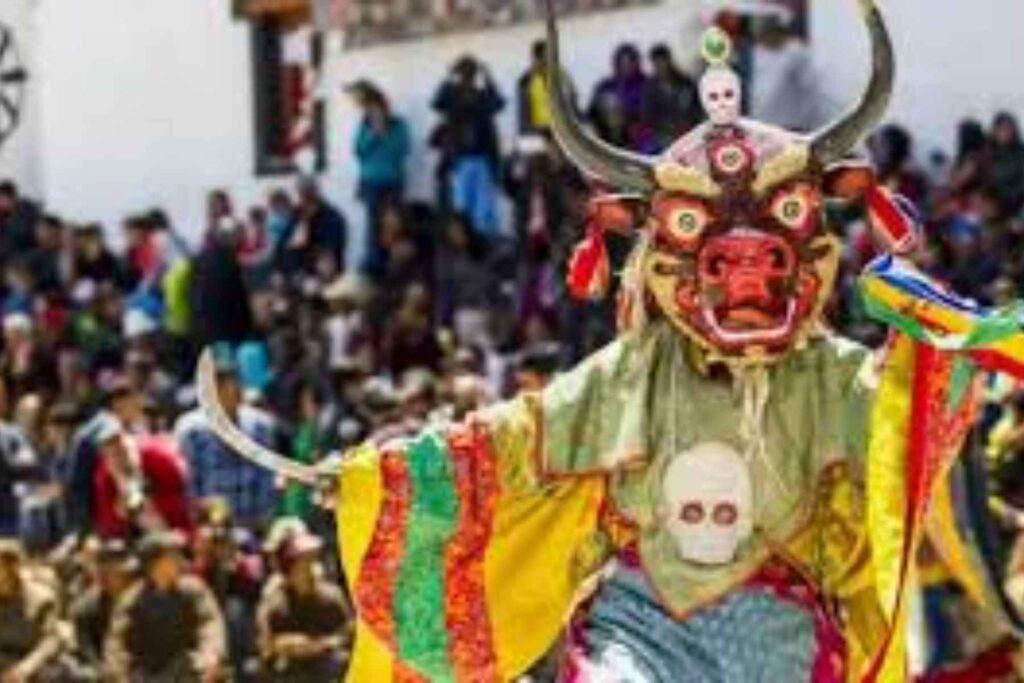
Ladakh, nestled in the Indian state of Jammu and Kashmir, is celebrated for its captivating natural beauty and distinctive culture, offering delightful Ladakh tour packages. Diverse ethnic groups contribute to the tapestry of festivals of Ladakh standing out as some of the most vibrant and unique in Asia. The renowned Hemis Festival at Hemis Monastery and lesser-known gems like Yuru Kabgyat add to the diverse tapestry of celebrations.
Ladakh’s festivals, celebrated annually with fervor, immerse visitors in the region’s cultural and heritage splendor. Whether it’s the Hemis Festival commemorating the birth of Lord Padmasambhava or the Losar Festival marking the Tibetan New Year, Ladakh’s festivals span seasons, providing a cultural spectacle. Ladakh evokes images of expansive brown mountains, crystal-clear lakes, enchanting monasteries, and a cultural tapestry steeped in richness.
The cultural fabric shaped by Buddhism is evident in Ladakh’s festivals, vibrant expressions of beliefs and traditions. Rooted in Buddhist principles, these festivals depict the eternal struggle between good and evil, joyously marking significant times like the harvest season. The cultural mosaic of Ladakh comes alive through these celebrations, offering a captivating glimpse into the region’s spiritual and seasonal narratives.
Experience the festivals of Ladakh amidst the breathtaking landscapes, adorned with apricot blossoms, and immerse yourself in the cultural richness of events like the Hemis Festival and Ladakh Zanskar Festival.
Top 11 Most Beautiful Festivals of Ladakh
- Dosmoche Festival
- Matho Nagrang Festival
- Stok Guru Tsechu
- Hemis Festival
- Losar Festival
- Phyang Tsedup
- Saka Dawa
- Ladakh Harvest Festival
- Sindhu Darshan
- Tak Tok Festival
- The Zanskar Festival
Dosmoche Festival
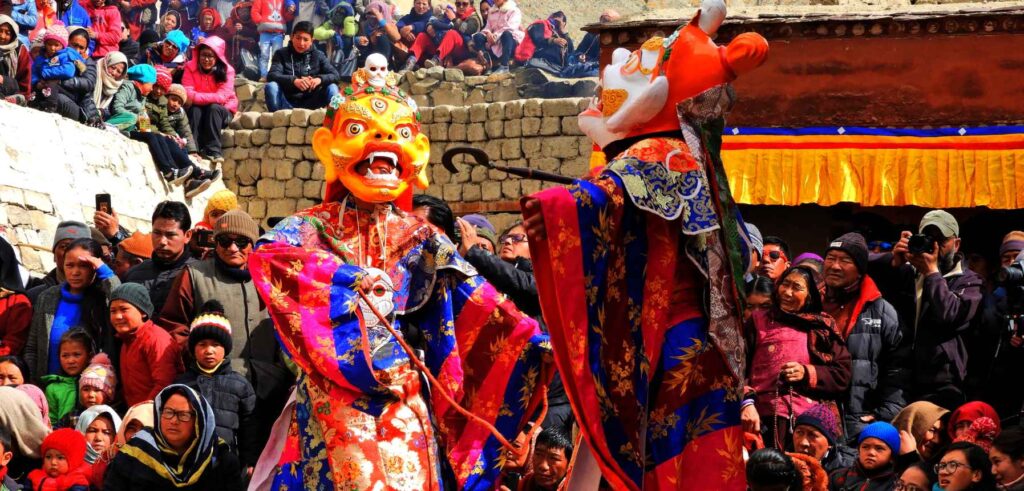
Dosmoche Festival is one of the vibrant festivals of Ladakh, celebrated with zeal and enthusiasm. It marks the victory of good over evil and is a two-day event filled with traditional music, dance, and religious rituals. Monks perform sacred masked dances, known as Cham dances, at the monasteries to drive away evil spirits and bring prosperity. Locals participate by offering prayers and colorful decorations. Dosmoche fosters a sense of community and spiritual harmony, embodying the rich cultural heritage of Ladakh.
Matho Nagrang Festival
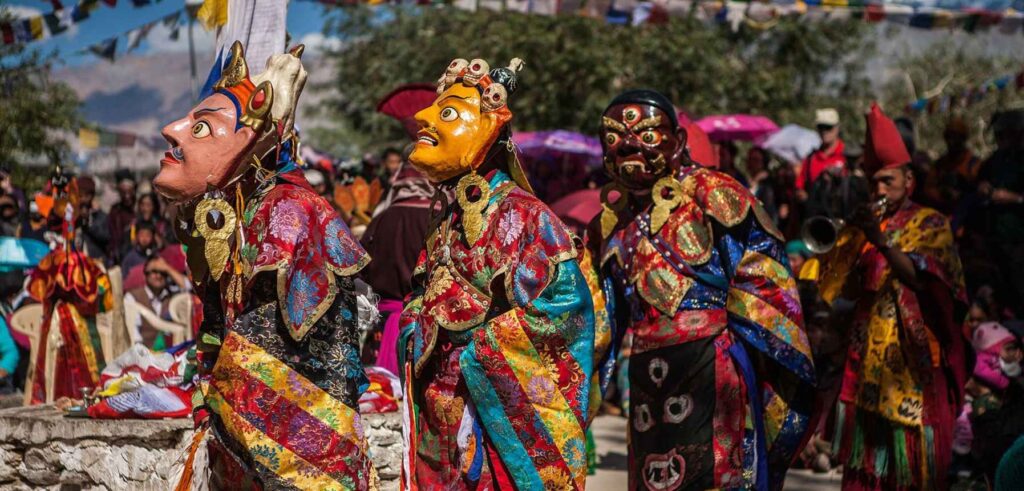
The Matho Nagrang Festival, among the vibrant festivals of Ladakh, unfolds at the enchanting Matho Monastery. This joyous event spans two days, featuring monks adorned in vibrant silk brocaded robes and masks depicting various deities, presenting splendid mask dances as part of the monastic celebrations.
The festival’s allure peaks with a distinctive event: after two months of intensive meditation in isolation, two oracles emerge. These oracles, with the ability to predict future events, make a grand entrance into the monastery’s courtyard, joining the masked monk dancers. Pilgrims and visitors from near and far are drawn to seek advice from these oracles and participate in rituals addressing potential disasters.
In a state of complete spiritual trance following their isolated meditation, the oracles engage in awe-inspiring feats during the Matho Nagrang festival. While blindfolded, they navigate balconies with remarkable agility, showcasing acrobatics that captivate the audience. This festival serves as a unique and spiritually charged spectacle, providing a glimpse into a world where ancient traditions and mystical performances converge, contributing to the rich tapestry of festivals of Ladakh
Stok Guru Tsechu
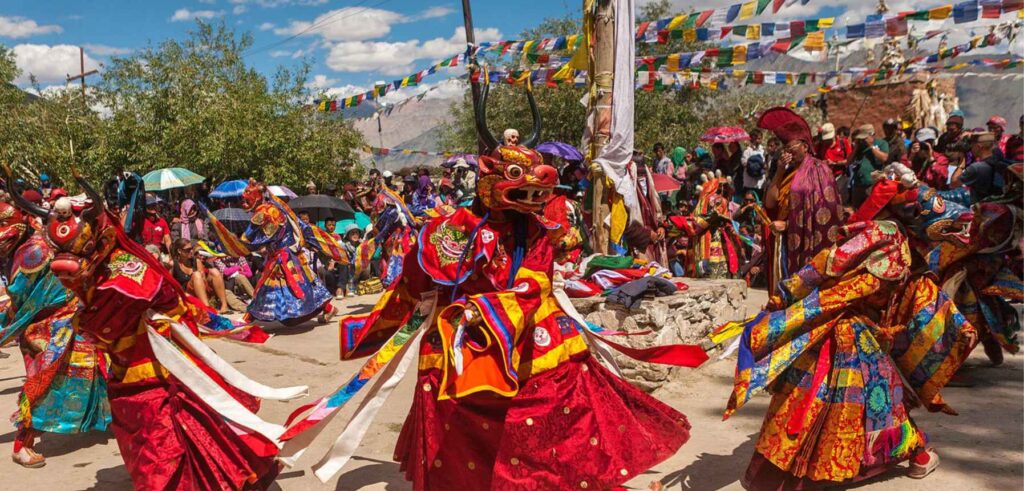
Stok Guru Tsechu, a prominent Buddhist festivals of Ladakh, takes place annually in February, just a week before the Matho Nagrang festival, adding to the rich tapestry of festivals of Ladakh, India. Widely cherished, this celebration is observed with great enthusiasm by the Buddhist community throughout Leh Ladakh, making it one of the prominent fairs and festivals in the region.
Conducted over two days, the festivities are led by Buddhist monks from Stok and Spituk monasteries in Ladakh. Similar to Matho Nagrang, Stok Guru Tsechu features the spiritual appearance of two “oracles” before the public. Notably, these oracles are not monks but laymen from the village. These individuals undergo formal training by the monks to invoke the deity and holy spirits, contributing to the festival’s unique character.
Hosted in the Stok village of Ladakh, the festival occurs on the 9th and 10th days of the first month of the Tibetan Lunar Calendar, usually falling in February or March. A distinctive highlight of Stok Guru Tsechu is the performance of “masked dances” by the monks from Spituk monastery, enhancing the cultural and spiritual celebrations with a mesmerizing visual spectacle.
In the grand array of festivals of Ladakh, Stok Guru Tsechu stands out, offering a unique blend of spiritual traditions, cultural expressions, and communal joy.
Hemis Festival
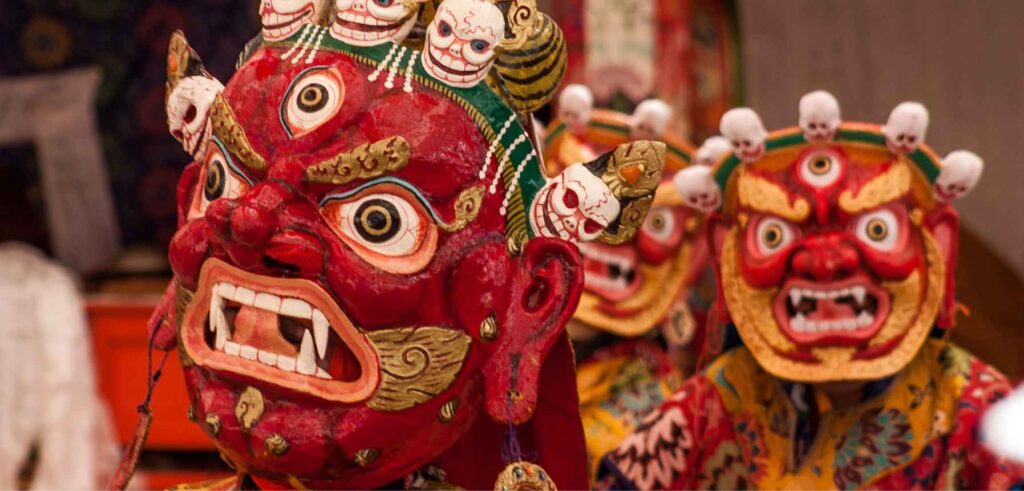
The Hemis Festival Ladakh stands out as a prominent religious celebration that attracts numerous tourists to the picturesque region of Leh. This festival serves as a tribute to the birth anniversary of Lord Padmasambhava, providing a captivating glimpse into Tibetan Tantric Buddhism. Unfolding over two days, this festivals of Ladakh takes place amidst the enchanting setting of the Hemis Gompa monastery, offering a dazzling array of cultural events.
One of the highlights of the Hemis Festival is the mesmerizing Cham Dance, a traditional performance that adds to the vibrancy of the celebration. Additionally, the festival includes the unveiling of intricate thangkas, which are Buddhist paintings of great significance. These cultural elements contribute to the festival’s richness and uniqueness, making it a captivating experience for all attendees.
Celebrated on the 10th day of the fifth month in the Tibetan calendar, typically falling in June or July of the Gregorian calendar, the Hemis Festival pays homage to Guru Padmasambhava, also known as Rinpoche. This revered figure played a pivotal role in spreading Buddhism in the Himalayan region. The festival becomes a moment for spiritual reflection, a rekindling of faith, and an opportunity for devotees to seek blessings from the enlightened being.
In the grand array of festivals of Ladakh, the Hemis Festival holds a special place, offering a rich cultural tapestry and deep spiritual significance. As tourists flock to witness these vibrant festivities, they also have the chance to experience the natural beauty of festivals of Ladakh, including the breathtaking apricot blossom, adding to the allure of this captivating region.
Losar Festival
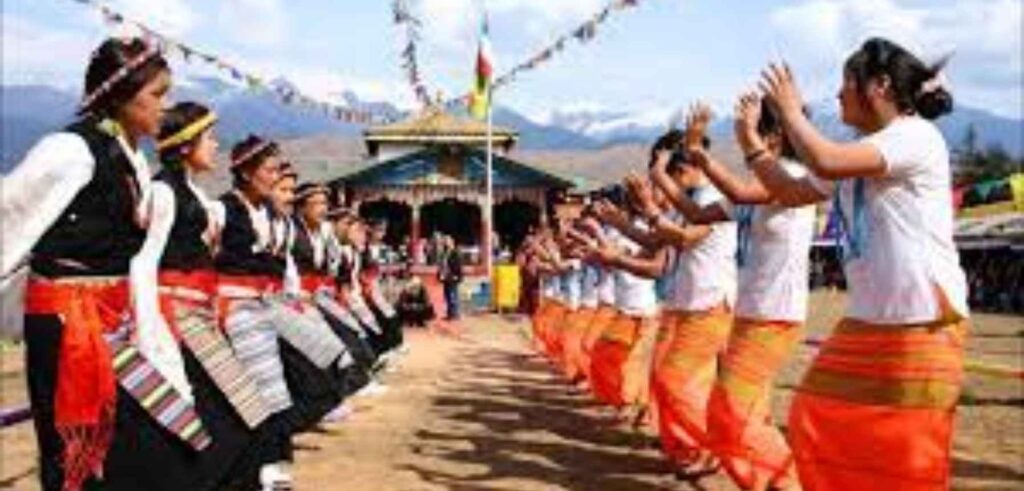
“Losar” in Ladakh, where “Lo” symbolizes year and “Sar” signifies new, provides an unparalleled and immersive encounter with the New Year celebration. The captivating folklore behind Ladakh’s Losar traces back to a pivotal moment when an oracle advised King Jamyang Namgyal to defer a conflict with soldiers from Baltistan until the following year. In a historical twist, the king chose to advance the celebration of New Year’s Eve by a month, altering the course of events.
The Losar festivities in Ladakh extend over 15 days, aligning with the initial week of the Lunisolar Tibetan calendar. The first three days hold particular significance for locals. The celebrations kick off with meticulous household cleaning, paving the way for traditional plays in various monasteries. Vibrant decorations grace homes, and a spirit of renewal fills the air as outdated items are symbolically removed. The gompas, or monasteries, also don festive attire in harmony with the celebration.
Ladakh, exuberantly celebrating Losar reminiscent of Tibet, emerges as a captivating destination to witness the festivities. Mask-wearing becomes an integral element, contributing to the cultural opulence of the occasion. The festival is characterized by extravagant feasts dedicated to gods and ancestors, fostering communal joy and gratitude.
Having personally experienced the Losar Festival during a stay in Ladakh, the journey unfolded as a memorable exploration into the heart of local culture. Active engagement with the people, participation in age-old traditions, and reveling in the festivities added an extraordinary dimension to the stay, creating a genuinely immersive and enriching cultural encounter amid the festivals of Ladakh.
Phyang Tsedup
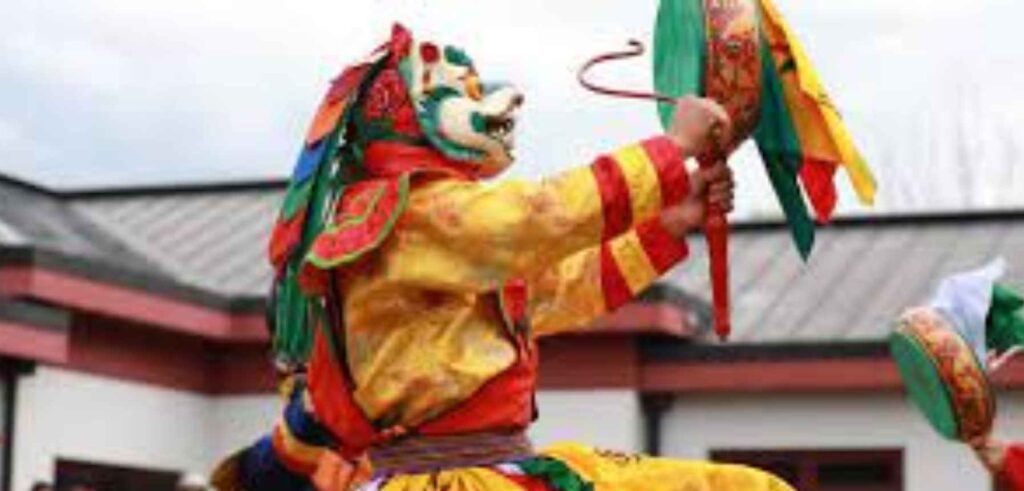
The Phyang Tsedup Festival, a prominent entry in the festivals of Ladakh, unfolds in the ancient monasteries of Dringungpa, Ladakh, from July to August. This vibrant celebration paints a vivid spectacle of cultural richness and draws men from the region, bedecked in colorful attire and exuding joyous expressions that contribute to the festive ambiance. The sacred Phyang Festival extends its allure beyond the local boundaries, attracting attendees from various corners of India and beyond, celebrated with fervor and vitality throughout Jammu.
At the heart of the Phyang Tsedup Festival is a mesmerizing main ceremony featuring captivating dance forms and the worship of the Thankha of Jigten Gombo. The Lamas, adorned in vibrant clothing, partake in a dance drama during which they portray various characters. A distinctive aspect of this performance lies in the use of masks, introducing an intriguing visual dimension to the festivities. Beyond mere entertainment, the dance drama serves as a conduit for conveying Buddhist teachings, with a myriad of Buddhist motifs and themes woven into the performance to disseminate the message of Lord Buddha among the attendees.
Complementing the dance drama, the Phyang Tsedup Festival hosts a comprehensive exhibition spanning the two-day celebration. The festivals of Ladakh is punctuated by special prayers, the resonant chanting of auspicious mantras by monks, and the captivating allure of ‘Chhams’—dramatic performances that add an extra layer of cultural richness. Situated 17 kilometers west of Leh and featuring the participation of 70 Buddhist monks, the Phyang Tsedup Festival stands as a remarkable cultural and spiritual event, embodying a harmonious blend of tradition, art, and devotion in the diverse tapestry of Ladakh’s festivals.
Saka Dawa
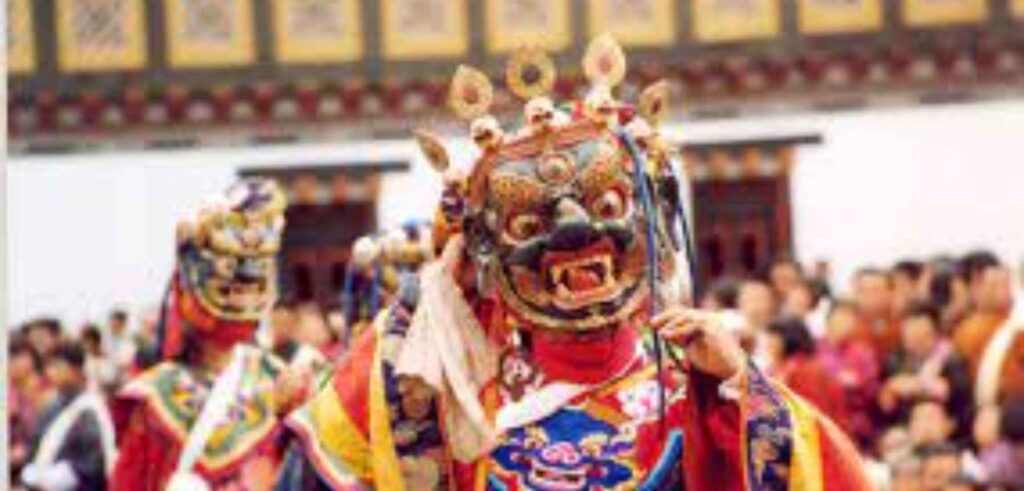
The Saka Dawa Festival, a pinnacle among the festivals of Ladakh, gracefully unfolds in the fourth month of the Tibetan calendar. This sacred celebration holds deep significance as it commemorates three pivotal events in the life of Lord Buddha – his birth, enlightenment, and parinirvana, all believed to have transpired on the full moon day of this auspicious month.
During the Saka Dawa Festival, the people of Ladakh immerse themselves in various dharma practices, paying homage to the profound teachings of Lord Buddha. This includes the recitation of mantras, meditative sessions, the offering of mandalas, taking precepts, and a collective commitment to abstain from killing animals or consuming meat as a tribute to Sakyamuni, the historical Buddha.
A distinctive ritual that marks the Saka Dawa Festival is the ceremonial changing of the Tarboche Flag, positioned south of the Kailash Kora Mountain. This symbolic act symbolizes the auspiciousness of the holy festival, resonating with the spiritual vibrancy that defines Ladakh’s cultural tapestry. Additionally, individuals partake in the turning of prayer wheels and offer heartfelt prayers, seeking well-being and prosperity not just for themselves but for their entire communities throughout the upcoming year.
In essence, the Saka Dawa Festival, with its emphasis on spiritual practices, community rituals, and profound reverence for Lord Buddha, serves as a poignant time for reflection, purification, and the earnest seeking of blessings for a harmonious and prosperous future in the captivating realm of festivals of Ladakh.
Ladakh Harvest Festival
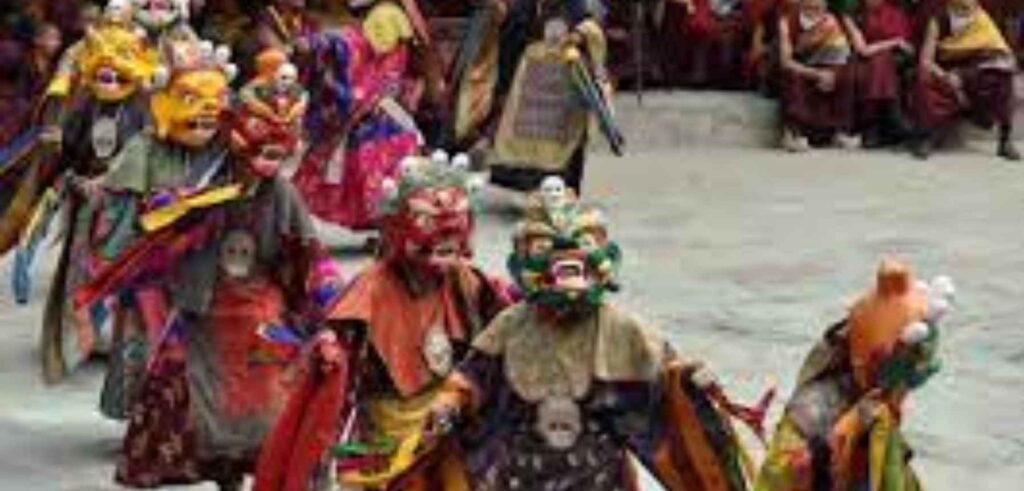
The Ladakh Festival, a hallmark among the festivals of Ladakh, is a remarkable event orchestrated by the Jammu & Kashmir Tourism department in Leh. This cultural extravaganza unfolds annually, spanning from September 1st to 15th, with a dedicated purpose to showcase and safeguard Ladakh’s rich heritage and time-honored traditions. The festival comes alive with the vibrant contributions of cultural troupes and villages, presenting ceremonial costumes, traditional dances, melodious songs, and an array of diverse skills. Archery competitions for males, spirited dances by females, and enchanting mask performances by lamas from sacred monasteries amplify the event’s cultural richness.
In Ladakh, where agriculture holds paramount importance, the harvest season is a cause for joy and celebration. The Ladakh Festival, spanning 15 days, mirrors this festive spirit, incorporating rituals such as consulting astrologers and offering prayers to pacify the elements. The festival’s reach extends beyond Leh, embracing the Kargil district and Zanskar valley, fostering a unifying celebration that transcends cultural boundaries.
The Ladakh Festival is a captivating blend of traditions, drawing inspiration from Asian, Tibetan, and North Indian cultures. It stands as a vibrant showcase of color, art, handicrafts, and the region’s unique music. Theatrical exhibits and folk dances contribute to the festival’s allure, creating a harmonious celebration that encapsulates the essence of Ladakh’s cultural richness. In this tapestry of festivals of Ladakh, the Ladakh Festival emerges as a radiant jewel, embodying the spirit and diversity of this enchanting region.
Sindhu Darshan

The Sindhu Darshan festival, an annual celebration along the banks of the River Sindhu in the Leh Ladakh region, unfolds each year on the full moon day. This three-day festival stands as a homage to the River Sindhu and the ancient Indus Valley Civilization, with a central objective of promoting the river as a powerful symbol of communal harmony in India. Notably, the inaugural Sindhu Darshan Festival served as the backdrop for the filming of the Bollywood movie “Dil Se,” adding to the diverse tapestry of festivals of Ladakh.
Originally inaugurated in October 1996, subsequent editions of the festival have consistently been scheduled in June, coinciding with the full moon day, known as Guru Purnima. The Sindhu Darshan Festival serves as a dynamic platform for cultural festivities and contemplation on the historical and cultural significance of the River Sindhu. It endeavors to foster a profound sense of unity and a shared heritage among the people who gather along the banks to partake in this annual celebration. In the tapestry of festivals of Ladakh, the Sindhu Darshan Festival emerges as a unique and symbolic event, weaving together the threads of history, culture, and communal harmony along the serene banks of the River Sindhu.
Tak-Thok Tse-Chu
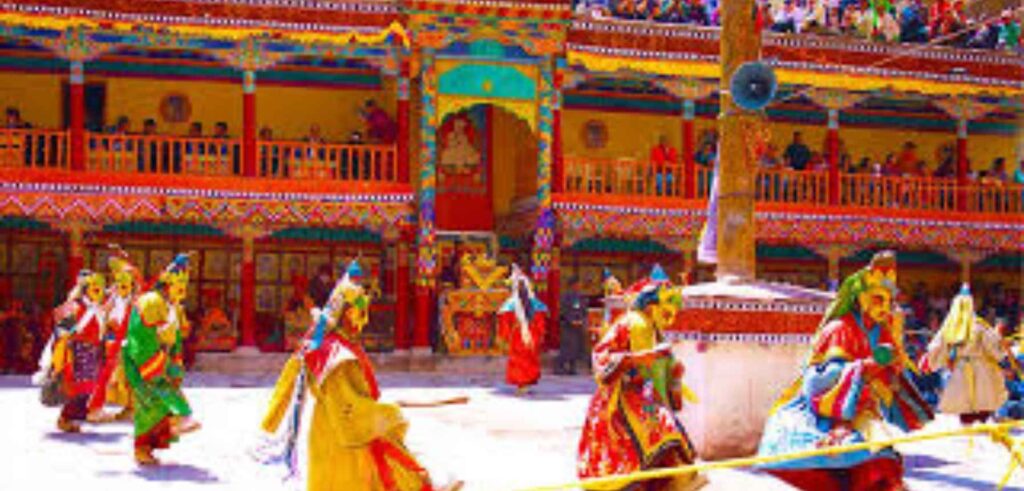
The Tak-Thok Tse-Chu festival stands as a beacon of cultural significance, drawing both tourists and local attendees to partake in its vibrant celebrations. Occurring during July and August, typically on the 10th day of the Lunar Tibetan Calendar, this festival transforms Ladakh into a lively spectacle. The Tse-Chu festivals, renowned among the festivals of Ladakh, showcase mesmerizing chham dances that involve active participation from both monks and the local community. These dynamic performances portray various facets of wrathful and compassionate deities, along with vivid depictions of diverse animals.
Considered a captivating attraction in Ladakh, the Tak-Thok Tse-Chu festival is believed to bestow merit upon those fortunate enough to witness it, offering teachings and protection from malevolent forces. Beyond its profound spiritual significance, Tse-Chu serves as a social gathering, where locals adorn themselves in their finest clothes and jewelry, enhancing the festive ambiance. With its colorful and dynamic celebrations, the festival serves as a living testament to Ladakh’s rich cultural heritage and deep-rooted spiritual traditions. In the mosaic of festivals of Ladakh, the Tak-Thok Tse-Chu festival stands out as a vibrant and culturally enriching experience.
The Zanskar Festival
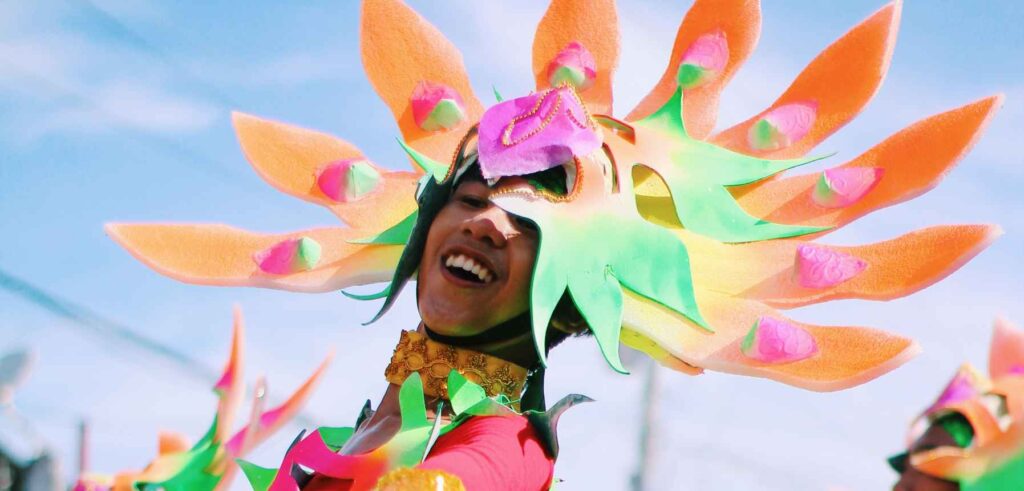
The Zanskar Festival in Ladakh, also known as Karsha Gustor, holds a distinguished place among the festivals of Ladakh, particularly within the Buddhist community. An eminent feature of this celebration is the captivating Black Hat Dance, a symbolic performance aimed at dispelling evil forces and representing the triumph of good over evil. Similar to the Chhams, this masked dance provides an immersive and unforgettable experience for attendees. Celebrated in January, the Zanskar Festival is alternatively known as Spituk Gustor Zanskar Festival.
The Feast of Oracles, hosted in Stok and commonly referred to as Zanskar (Karsha Gustor) in Ladakh, takes on a unique character. Stok, currently serving as a Royal Residence, undergoes a transformative experience during this festival. Laymen step into the role of predicting the future, a departure from the traditionally recognized soothsayers. At Zanskar Ladakh (Karsha Gustor), these chosen laymen undergo a spiritual cleansing by the Lamas, preparing them to receive the spirit of the Holy Deity. This fascinating dimension adds to the cultural richness and spiritual significance of the festival, creating a truly unique and engaging experience within the tapestry of festivals of Ladakh.
Suggested Blog: Things to Do in Ladakh
Conclusion
The festivals of Ladakh showcase the region’s cultural richness and vibrant traditions. From the grandeur of the Hemis Festival to the sacred rituals of Losar and the captivating dances of Tak-Thok Tse-Chu, each celebration tells a unique tale of tradition, spirituality, and community. These festivals serve as windows into the soul of Ladakh, revealing not only ancient rituals but also reflecting the resilience and unity of the Ladakhi people.
Festivals of Ladakh go beyond being mere events; they are living embodiments of cultural heritage, providing a profound connection to the region’s history and beliefs. The masked dances, fervent prayers, and communal feasts form a colorful tapestry that leaves an indelible impression. These festivals of Ladakh invite both locals and visitors to partake in the joyous symphony of tradition and spirituality that defines this breathtaking corner of the world. As vibrant dances echo through the valleys and ancient rituals unfold, Ladakh’s festivals become a celebration of life, unity, and the enduring spirit of this remarkable land.
Among these festivals of Ladakh, the Ladakh Zanskar Festival, including the Zanskar Festival and the Apricot Blossom Ladakh, play distinctive roles in adding layers of cultural vibrancy to this Himalayan region. The Zanskar Festival with its Black Hat Dance and the unique Feast of Oracles in Stok showcase the region’s diverse traditions, while the Apricot Blossom Ladakh paints a picturesque scene of nature’s beauty intertwining with cultural celebrations. Together, these festivals contribute to the rich mosaic that defines Ladakh as a cultural and spiritual haven.

